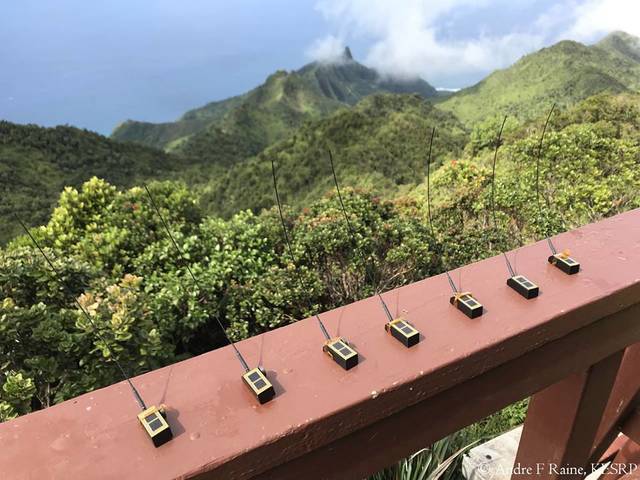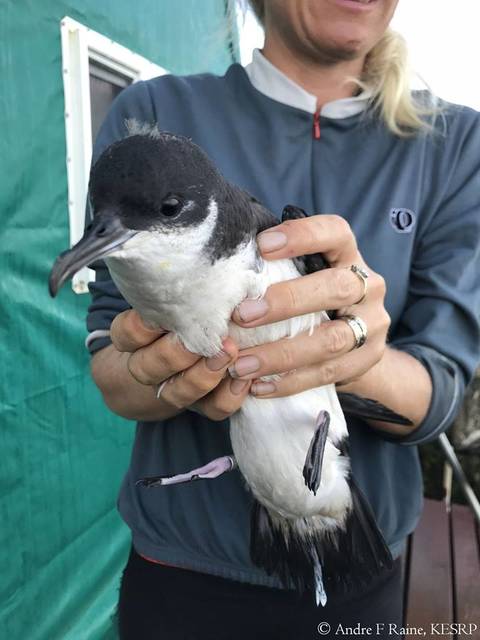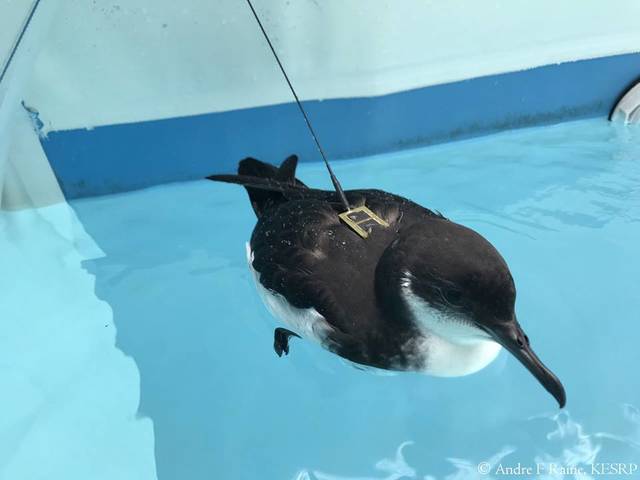LIHUE — Nine Newell’s shearwater chicks are helping fill in the blanks about what happens after the fledglings leave the island to cruise the Pacific Ocean.
The fledglings from the mountains of Upper Limahuli on Kauai’s North Shore emerged from burrows monitored by Kauai Endangered Seabird Recovery Project (KESRP) and Save Our Shearwaters and were tagged over the past few weeks to be part of a project that started in 2014.
The U.S. Geological Survey also helped initiate the project in 2014, and the goal is twofold: To check on the condition of downed seabirds and to gain more information on fledgling flight patterns. In total, 50 birds will be tagged in the project.
“The idea is to find out what happens to the fallout shearwater chicks once they have been released and head out to sea,” said Andre Raine of KESRP.
Raine continued: “The last we see of them is a dark speck heading out over the open waters in the distance — the satellite tags allow us to see what happens next.”
These seabirds are born in the mountains and use the moon to navigate from their birth colony out to sea once they’ve fledged, or developed wings large enough for flight.
They flap their wings outside their burrows and once they’re airborne, the young seabirds — shearwaters and also Hawaiian petrels — use natural light like starlight and moonlight to find their way out to sea.
Artificial lighting attracts the seabirds, so they circle until they fall to the ground, known as “fallout.” From Sept. 15 through Dec. 15 is “fallout season” on Kauai.
That affects some aspects of island life, pushing some football games into afternoons so stadium lights don’t cause fallout, and changing the schedule of roadwork.
Recently, the Hawaii Department of Transportation has had workers trimming trees along Kuhio
Highway in the Wailua area, causing slow-downs in morning traffic. The work would be usually be done at night, but DOT alters the schedule during fledging season.
Newell’s shearwaters are endangered and Hawaiian petrels are classified as vulnerable with populations decreasing, and efforts on Kauai to protect the seabirds are layered.
There are ongoing projects by Kauai Island Utility Cooperative to lessen collisions between the birds and power lines, predator control efforts in and around colonies, and a predator-proof nesting area established at Nihoku on the North Shore for the birds.
While KESRP and partners are working to create a safer island for the birds to nest and fledge on, the tagging project will ideally provide information on what happens to them when they’re off-island.
“We want to see how these rehabilitated birds fare compared to birds that have not been attracted and grounded by light pollution, as light attraction is a huge problem for Newell’s shearwater on Kauai,” Raine said.
He continued: “So far our tagged birds have flown thousands of kilometers to the south-west of Kauai — an amazing feat when one considers that this is the first time they have ever flown, having grown up in the dark confines of their mountain burrows.”
•••
Jessica Else, environment reporter, can be reached at 245-0452 or jelse@thegardenisland.com.




